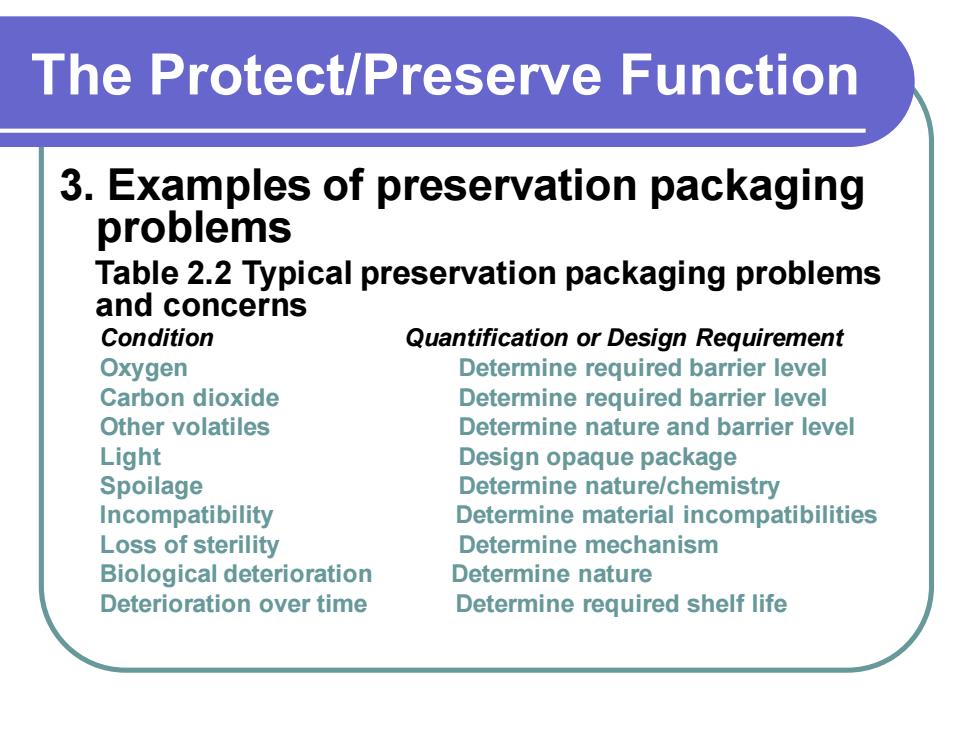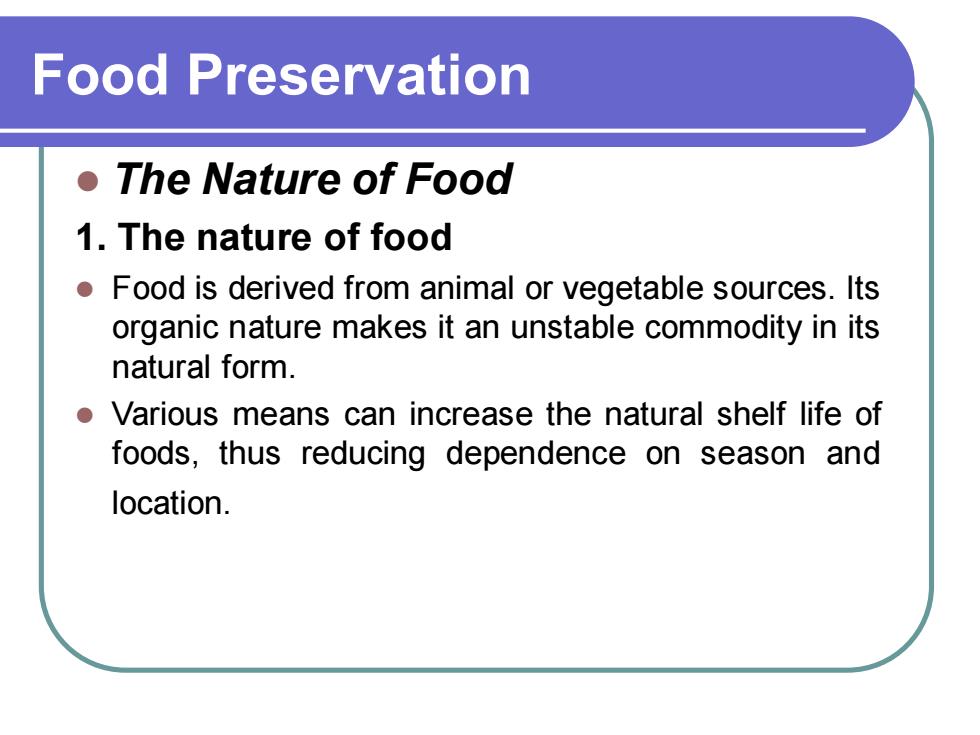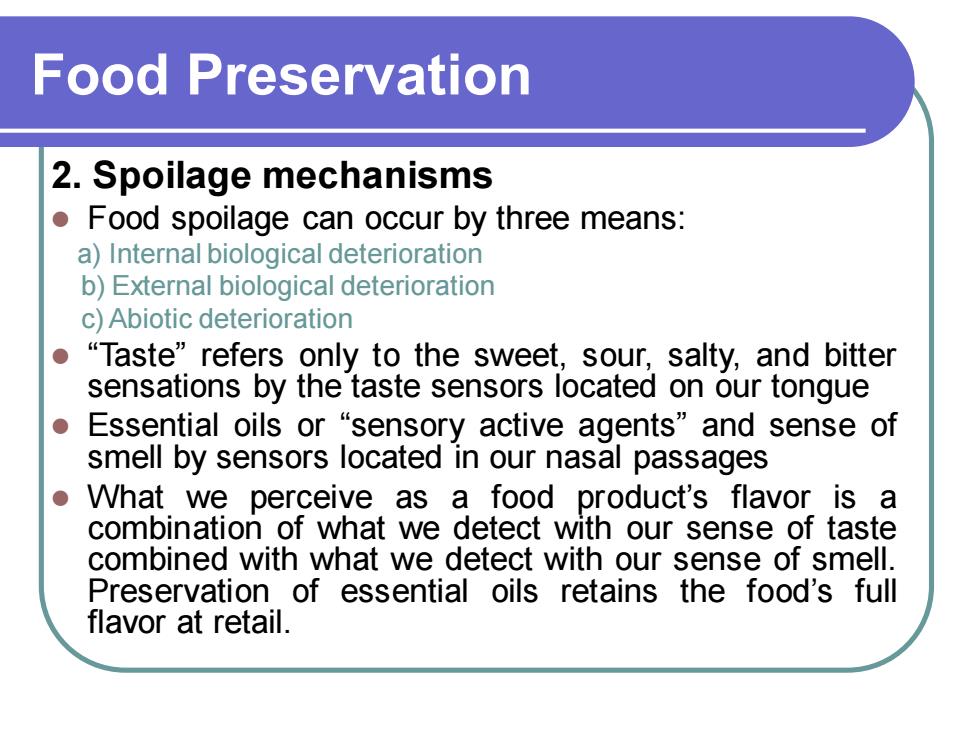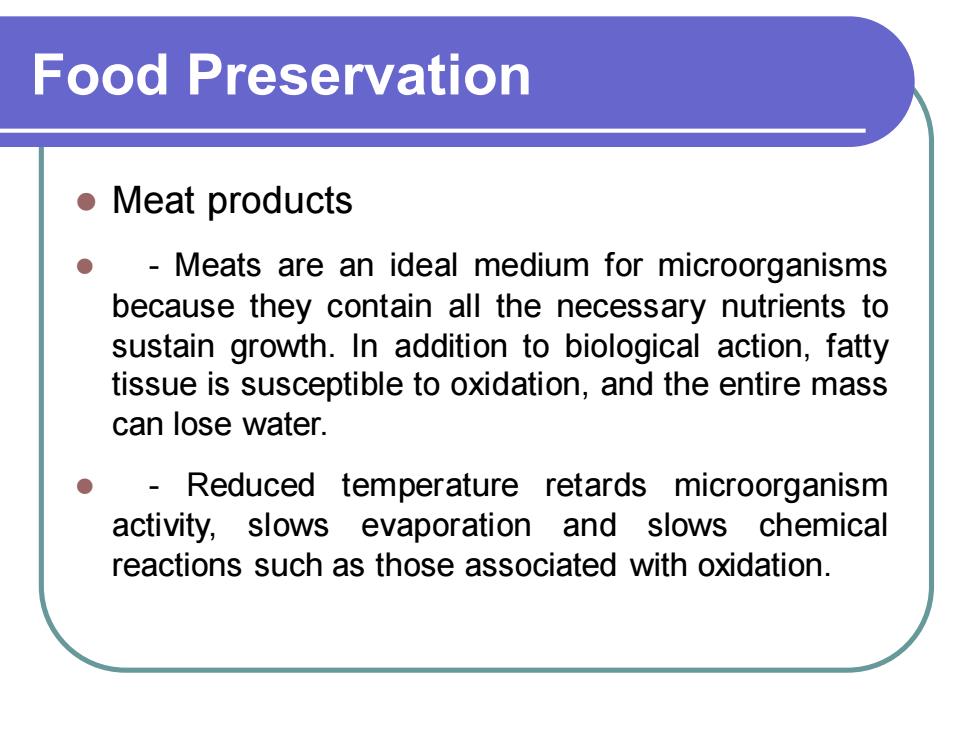
The Protect/Preserve Function 3. Examples of preservation packaging problems Table 2.2 Typical preservation packaging problems and concerns Condition Quantification or Design Requirement Oxygen Determine required barrier level Carbon dioxide Determine required barrier level Other volatiles Determine nature and barrier level Light Design opaque package Spoilage Determine nature/chemistry Incompatibility Determine material incompatibilities Loss of sterility Determine mechanism Biological deterioration Determine nature Deterioration over time Determine required shelf life
The Protect/Preserve Function 3. Examples of preservation packaging problems Table 2.2 Typical preservation packaging problems and concerns Condition Quantification or Design Requirement Oxygen Determine required barrier level Carbon dioxide Determine required barrier level Other volatiles Determine nature and barrier level Light Design opaque package Spoilage Determine nature/chemistry Incompatibility Determine material incompatibilities Loss of sterility Determine mechanism Biological deterioration Determine nature Deterioration over time Determine required shelf life

Food Preservation ⚫ The Nature of Food 1. The nature of food ⚫ Food is derived from animal or vegetable sources. Its organic nature makes it an unstable commodity in its natural form. ⚫ Various means can increase the natural shelf life of foods, thus reducing dependence on season and location
Food Preservation ⚫ The Nature of Food 1. The nature of food ⚫ Food is derived from animal or vegetable sources. Its organic nature makes it an unstable commodity in its natural form. ⚫ Various means can increase the natural shelf life of foods, thus reducing dependence on season and location

Food Preservation 2. Spoilage mechanisms ⚫ Food spoilage can occur by three means: a) Internal biological deterioration b) External biological deterioration c)Abiotic deterioration ⚫ “Taste” refers only to the sweet, sour, salty, and bitter sensations by the taste sensors located on our tongue ⚫ Essential oils or “sensory active agents” and sense of smell by sensors located in our nasal passages ⚫ What we perceive as a food product’s flavor is a combination of what we detect with our sense of taste combined with what we detect with our sense of smell. Preservation of essential oils retains the food’s full flavor at retail
Food Preservation 2. Spoilage mechanisms ⚫ Food spoilage can occur by three means: a) Internal biological deterioration b) External biological deterioration c)Abiotic deterioration ⚫ “Taste” refers only to the sweet, sour, salty, and bitter sensations by the taste sensors located on our tongue ⚫ Essential oils or “sensory active agents” and sense of smell by sensors located in our nasal passages ⚫ What we perceive as a food product’s flavor is a combination of what we detect with our sense of taste combined with what we detect with our sense of smell. Preservation of essential oils retains the food’s full flavor at retail

Food Preservation ⚫ Essential oils are volatile.Volatiles can permeate packaging materials and making the problem of contamination or isolation even more difficult. ⚫ Water vapor is similar to an essential oil in that it readily permeates many packaging materials. ⚫ The creation of high-barrier packaging systems is partly in response to the need for packaging that will either hold desirable gases and volatiles in the package or prevent undesirable volatiles from entering the package. ⚫ Temperature can promote undesirable changes that are abiotic in nature
Food Preservation ⚫ Essential oils are volatile.Volatiles can permeate packaging materials and making the problem of contamination or isolation even more difficult. ⚫ Water vapor is similar to an essential oil in that it readily permeates many packaging materials. ⚫ The creation of high-barrier packaging systems is partly in response to the need for packaging that will either hold desirable gases and volatiles in the package or prevent undesirable volatiles from entering the package. ⚫ Temperature can promote undesirable changes that are abiotic in nature

Food Preservation ⚫ Meat products ⚫ - Meats are an ideal medium for microorganisms because they contain all the necessary nutrients to sustain growth. In addition to biological action, fatty tissue is susceptible to oxidation, and the entire mass can lose water. ⚫ - Reduced temperature retards microorganism activity, slows evaporation and slows chemical reactions such as those associated with oxidation
Food Preservation ⚫ Meat products ⚫ - Meats are an ideal medium for microorganisms because they contain all the necessary nutrients to sustain growth. In addition to biological action, fatty tissue is susceptible to oxidation, and the entire mass can lose water. ⚫ - Reduced temperature retards microorganism activity, slows evaporation and slows chemical reactions such as those associated with oxidation